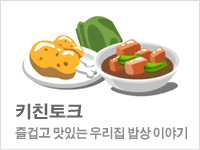이희수 교수가 이 지방의 아름다움을 담은 영화
마농의 샘을 소개하는 글을 읽었습니다.
아주 오래 전에 본 영화이고 샘을 둘러싼 사람들 사이의 갈등을 다룬 명화였었다는 것만 어렴풋이 기억이 나서
이번에는 풍광을 주로 보고 싶다는 마음으로 빌려 보았지요.
우선 영화 전반에 걸쳐 흐르는 하모니카의 음색이
인상적이더군요.
수베랑 가문이라는 것에 애착을 느끼고 있는 늙은 수베랑의 집 문을 두드리는 소리로 영화는 시작됩니다.
군대에서 돌아온 위골랭의 방문으로 세자르는 활기를 띱니다.
그를 통해 가문을 이어야 한다는 생각으로요.
위골렝은 카네이션을 키워서 한 재산을 모으려고 하는데
그 지방에서는 물이 문제입니다.
그런데 어느 날 플로레트의 곱추 아들이 어머니의 죽음으로 상속을 받은 자신의 땅에 부인과 어린 딸과 함께 이사를 오지요.
그의 집과 땅을 사서 꽃 농사를 지으려고
수베랑과 위골렝은 샘을 막아버립니다.
그 샘이 마농의 샘이라고 불리는 이유는 곱추인 장의 부인이 오페라에서 활동한 사람이라 딸의 이름을 오페라에서 나오는 마농이라고 지어준 덕분이지요.
샘을 막는 시간
우연히 그 곳에 있던 한 남자가 그 사실을 엿보게 됩니다.
그 지방 사람들도 막연히 샘이 막힌 것은
이 두 사람때문인 것을 알지만
같은 지방 사람의 짓이고 간섭해서 좋을 일이 없다고 다 덮어둡니다.
내 일이 아니라고 몰라라 하는 것
이 것이 바로 죄악임을 이 작품은 소리높이지 않고
우리들에게 보여주고 있습니다.
쟝은 이 곳에서 정착하여 살아가려고 하지만
물이 모자라서 애를 태우며 노력을 하다가
결국 죽음을 맞이합니다.
땅을 팔고 떠나기 직전 어린 마농은 이 두 사람이
그들이 떠나갔으리라 생각되는 시간에 바로
샘으로 가서 막힌 샘을 뚫는 장면을 목격합니다.
어머니는 도시로 노래하러 가고
혼자서 양을 치며 살아가는 마농
어느새 10년을 훌쩍 뛰어 넘어서 영화는 진행이 되고
위골렝은 어느 날 목욕하는 그녀를 훔쳐보고 사랑의 열병을 앓습니다.
그러나 아버지의 죽음에 대해서 알고 있는 마농은
복수하는 심정으로 샘물을 막아버립니다.
갑작스런 재앙,물이 나오지 않자
사람들이 모두 다 성당으로 몰려듭니다.
기적을 바라는 애타는 기도
이 영화를 보면서 기적은 초자연적인 현상이 아니라
굳어진 사람의 마음을 녹이는 것이 바로
기적이 아닐까 하는 생각을 해보게 되더군요.
위골렝은 공개적으로 사랑을 하소연하지만
결국 이루어지지 못하리란 것을 알고
목매달아 자살을 하고
어느 날 성당앞에 앉아 있는 수베랑에게
눈이 먼 한 여자가 찾아와
진실을 밝힙니다.
곱추가 바로 수베랑의 아들이라고요.
하룻밤 함께 지냈던 사랑하던 여자 플로레트의 아이였노라고
아프리카에 가 있던 시절
편지를 보냈는데 답장이 없어서 플로레트가
아이를 지우려고 애를 쓰다가 결국 실패하고
대장장이와 만나서 결혼을 한 것이라고
진실을 알게 된 수베랑은 자신의 마음을 견디지 못하고
결국 모든 것을 편지에 밝히고 잠자는듯이
죽는 것으로 영화는 끝이 나더군요.
물을 둘러싼 인간의 탐욕과 엇갈린 운명
프로방스 지방의 풍광,그리고 하모니카 소리
오랫동안 기억하게 될
언젠가는다시 보게 될 영화라는 생각이 드네요.
일요일 아침 아이들이 아직 깨기 전이라
기타로 연주되는 음반 하나를 걸어놓고
에밀 놀데의 그림을 보고 있습니다.


독일 표현주의 화가인 에밀 놀데는
신교도 집안에서 자랐고 어린 시절 읽은 성서의 영향이
그의 작품에 상당한 영향을 끼쳤다고 합니다.
이 작품의 제목은 황금송아지앞에서의 춤인데
구약 성서의 이야기가 모티프가 된 것인 모양이네요.
마농의 샘에서도 샘물이 나오지 않자 성당에 모인
사람들앞에서 신부가 이야기하는 장면이 있더군요.
당신들이 하나님앞에 기도하는 것일까?
아니면 감자나 꽃 이런 대상들에게 기도하는 것일까?


이 작품의 제목은 candle dancers입니다.
인상적인 작품이지요?



위의 두 작품은 기독교의 성화에서 주로 볼 수 있는 소재이지만
누가 그리는 가에 따라서 얼마나 다른 표현이 가능한 가를 보여주는 작품이로군요.
텍스트는 하나라도
그것을 읽거나 보는 사람들에게 얼마나 많은 해석의 가능성이 있는 것일까요?

에밀 놀데가 누군가 궁금한 사람들을 위한
간단한 영어로 소개된 글이 있네요.
Emil Nolde added a special, mystical dimension to German Expressionism, and his career illustrates a number of the moral dilemmas which faced German Modernists of the first generation, since his instincts were nationalist and conservative even though his art was regarded as experimental.
His real name was not Nolde but Hansen; his parents were Frisian peasants. He was born in 1867 and grew up on the farm which had belonged to his mother's family for nine generations. Even as a boy Nolde was different from his three brothers: he drew, modelled and painted, and covered boards and barn doors with drawings in chalk. Some aspects of the family background, however, affected him deeply. The family were Protestants, steeped in religion, and in his youth Nolde read the Bible a great deal - its images were to return to him later in life.
It was clear that Nolde was unsuited for farm work, and in 1884 he took a job as an apprentice carver in a furniture factory in Flensburg. Here he stayed for four years, drawing and painting in his spare time. In 1888 he went to Munich, to see an exhibition of industrial arts, and managed to stay on by finding a job in a furniture factory. After only a few weeks he moved to Karlsruhe, where he found a similar job and attended classes in a school of industrial arts in the evenings. Eventually he gave up his job and enrolled in day classes at the same school, drawing from plaster casts and studying perspective and anatomy. He was unable to stay more than two semesters, as his savings ran out. In the autumn of 1889 he moved to Berlin, where he took a job as a furniture designer and spent his leisure time studying Old Master paintings in the magnificent Berlin museums; he also had his first encounters with Ancient Egyptian and Assyrian art in the archaeological collections there. In 1890 he fell ill, and spent the summer on his parents' farm.
The autumn of 1891 marked a change of direction, when Nolde saw an advertisement for a teaching post at the Museum of Industrial Arts at St Gallen in Switzerland. He applied for the job and was accepted, moving to St Gallen in January 1892. His duties were to teach industrial and ornamental drawing. The job was demanding, and he could paint only in the vacations; nevertheless, the fact that Switzerland was at the crossroads of Europe enabled him to travel. He went to Milan and saw Leonardo's Last Supper, some aspects of which were to haunt him for long afterwards, and to Vienna, where he saw Durer's prints in the Albertina. Though he was a reluctant reader, his intellectual horizons were expanding. He discovered the Symbolists and Nietzsche, and he was deeply impressed by a performance of Ibsen's The Wild Duck. Like many half-educated men, he started to feel that he was alone, misunderstood and persecuted - he was to suffer from these feelings for the rest of his life, latterly with some reason.
In 1893 Nolde embarked on an artistic enterprise which he at first treated only half seriously. He made a series of humorous postcards in which he represented the most famous of the Swiss mountains in semi-human form as a race of giants. The periodical Jugend reproduced two of these in 1896, and the proprietor of the magazine was sufficiently impressed to invite the artist to his home in Munich. Thus encouraged, Nolde borrowed enough money to issue a large edition of the postcards. They appealed to popular taste, and 100,000 copies were sold within ten days. Nolde made 25,000 gold francs, and, freed from financial worries for the time being, gave up his job and went to live in Munich. He wanted to study at the Munich Academy under the most celebrated painter in the city, Frans von Stuck, but was not accepted, and instead attended two private academies. In the autumn of 1899 he moved to Paris for nine months where he worked on and off at the Acad6mie Julian, but spent most of his time in the museums and studying the special exhibitions put on for the Paris World's Fair of 1900. He was already an admirer of Daumier's lithographs and was now impressed by Manet, but not by the other, younger Impressionists. Nolde returned to northern Germany in 1900, and embarked on a tormented search to discover his own artistic personality:
I had an infinite number of visions at this time, for wherever I turned my eyes nature, the sky, the clouds were alive, in each stone and in the branches of each tree, everywhere, my figures stirred and lived their still or wildly animated life, and they aroused my enthusiasm as well as tormented me with demands that I paint them.
Despite these feelings, Nolde painted very few visionary pictures during this period - they were to come later - but instead painted mainly landscapes and portraits. In 1900 he moved to Copenhagen, where he met and married Ada Vilstrup. They soon began to be dogged by financial problems, and in addition Ada was repeatedly ill. In the spring of 1903 the couple moved to the remote island of Alsen. In 1904 they went to Berlin, where Ada made an ill-fated attempt to make some money by singing in nightclubs. This led to a serious breakdown, so Nolde took her to Taormina in Italy to convalesce, moving afterwards to Ischia. The Italian scene, for all its beauty, did not move him as his native Germany did, and in 1905 they returned. Ada was in and out of one sanatorium after another; Nolde based himself in his lonely fisherman's cottage in Alsen. His visionary feelings were stronger than ever, the calls of animals at night had the power of suggesting colours: 'The cries appeared as shrill yellows, the hooting of owls in deep violet tones.'
He was rescued from his isolation by the young artists of Die Brücke, who recognized in him a kindred spirit. Schmidt-Rottluff saw some paintings Nolde was exhibiting in Dresden, and wrote inviting him to become a member of their group. He followed up his letter with a visit to Alsen, and in 1907 Nolde moved to Dresden, putting Ada into yet another sanatorium there. His official membership of Die Brücke did not last long - Nolde was essentially not gregarious and soon withdrew, though he maintained friendly relations with individual members. His young colleagues had an important influence on his work: in particular, he followed their example in making woodcut prints, and in addition they encouraged him to return to lithography, which he had tried in Munich.
Nolde's art became much freer: he began to see that 'dexterity is also an enemy' and he allowed himself to create fantastic paintings 'without any prototype or model, without any well defined idea ... a vague idea of glow and colour was enough. The paintings took shape as I worked.' The fantasies and the Biblical paintings he created at this time are generally considered his greatest works.
He was becoming a well known and controversial figure in the German art world of the time. In December 1910 he wrote a violently critical letter, with nationalist and racist overtones, to Max Liebermann, the greatly respected President of the Berlin Sezession, who happened to be a Jew. As a result he was expelled from the Sezession. When Max Pechstein and other Expressionists formed the Neue Sezession in the following year, Nolde duly joined, and helped to give the new organization much of its aggressive character. He was invited to take part in the second Blaue Reiter show in Munich, and also in the 1912 Sonderbund exhibition in Cologne, which brought together all the avant garde painters in Germany. In the same year the museum in Halle acquired his painting of The Last Supper despite the violent opposition of Dr Wilhelm von Bode, the great savant who had been largely responsible for building up the magnificent collection of Old Masters in Berlin.
In 1913, for reasons which remain somewhat mysterious, Nolde was offered a unique opportunity to expand his horizons. The German Colonial Office invited him to take part in an expedition to the German territories in the South Pacific. Its main purpose was medical - to study health conditions among the natives - but Nolde, who had no professional qualifications for the task, was asked to research the racial characteristics of the population. He and Ada travelled via Moscow, Mukden, Seoul, Tokyo, Peking, Nanking, Shanghai, Hong Kong, Manila and the Palau Islands to Rabaul, in German New Guinea. In 1914 he made trips to Neu Mecklenburg (now New Ireland) and the Admiralty Islands, before setting off again for home, travelling via the Celebes, Java and Aden. When Nolde and his wife arrived at Port Said they found that the First World War had broken out, and were only able to make their way home by obtaining Danish passports. On this journey Nolde noted the damage done by Europeans, even in China, which possessed such an ancient civilization of its own. 'We live in an evil era,' he said, 'in which the white man brings the whole earth into servitude.'
On his return he resumed what had now become a customary pattern, which was to spend the spring, summer and autumn in the countryside, and the winter in Berlin, where he drew rather than painted. He gave up his house on Alsen in 1916, and returned to his native Schleswig, living first at Utenwarf, which became Danish after the war. In the immediate post war years he travelled quite widely, going to England, France and Spain in 1921, and to Italy in 1924. In 1927 he settled on the German side of the frontier, building a house to his own design on the site of a disused wharf which he named 'Seebull'. His reputation now stood very high in Germany. In 1927 his sixtieth birthday was celebrated with an official exhibition in Dresden; in 1931 he became a member of the Prussian Academy of Fine Arts, and in 1933 he was offered the presidency of the State Academy of Arts in Berlin.
The Nazi takeover did not effect Nolde immediately, but he had other troubles to think about. In 1934 it was discovered that he was suffering from stomach cancer. He had a successful operation in Hamburg in 1935 which was followed by a long convalescence in Switzerland, during which he met Paul Klee, who was also in poor health. The two men genuinely admired one another. Nolde once described Klee as 'a falcon soaring in the starry cosmos', and Klee reciprocated by calling him 'the mysterious hand of the lower region'.
Despite ominous signs to the contrary, Nolde had assumed that he would be immune from the Nazi campaign against Expressionism and other forms of modern art. In a certain sense the Nazi philosophy resembled his own, which continued to owe a debt to Nietzsche. He was stripped of his illusions by the events of 1937, when his work was included in the Degenerate Art Exhibition in Munich (his protests to the authorities went unheeded); when more than a thousand of his works were removed from German museums; and when the official celebrations for his seventieth birthday were cancelled. Worse was to follow. In 1941, the Reichskammer der Bildenden Kunste demanded that he send in his entire production for the past two years. Fifty four of the works he sent were confiscated, and he was forbidden to practise his vocation as an artist. Later Nolde went to Vienna to appeal personally to the Nazi gauleiter Baldur von Schirach - in vain.
He had already given up his apartment in Berlin, and had begun to produce what he called his 'unpainted pictures' - hundreds of small watercolours which he hid in a secret cache in his isolated house. He was very much alone. His wife became ill again in 1942 and was taken to hospital in Hamburg. The opportunity to leave Germany was long past - at one stage Nolde could have done so easily, by crossing the nearby Danish frontier, but apparently he never entertained the idea.
He survived the war, as did his invalid wife, who died in November 1946. As the grand old man of German art, Nolde now enjoyed a new lease of life. In 1947 there were exhibitions in Kiel and Lubeck to celebrate his eightieth birthday. In 1948 he married a twenty eight year old woman, the daughter of a friend. In 1952 he was awarded the German Order of Merit, his country's highest civilian decoration. He continued to work with tremendous energy, producing oils based on the watercolours he had created during the years of persecution. His last oil painting was done in 1951, and he was able to make watercolours late in 1955. Nolde died in April 1956, aged eighty eight
에밀 놀데의 해바라기입니다.



이 그림의 제목이 red clouds로군요.
표현주의에서 화가가 바라보는 대상은 이제
객관적인 사물이 아니라 자신의 감정이 투사된 사물이
되는 과정을 잘 보여주는 제목이네요.
그림이 마음에 들어서 오래 쳐다보고 있는 중입니다.

이제 2월이 정말 다 지나가고 있군요.
방학이 끝나가니 시원 섭섭합니다.
일찍 일어나야 하는 부담감, 그래도
아이들의 불규칙한 생활을 바라보는 것에서 느끼는 스트레스를 벗어날 수 있다는 기대
어느 것이 더 좋은가를 생각해보게 되는 아침입니다.


 회원정보가 없습니다
회원정보가 없습니다